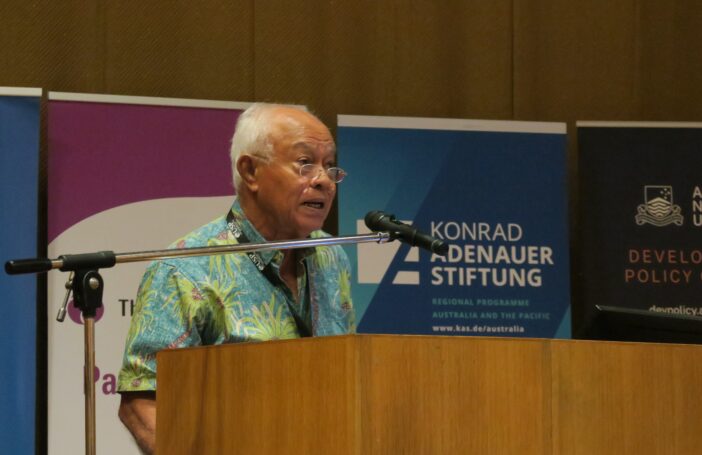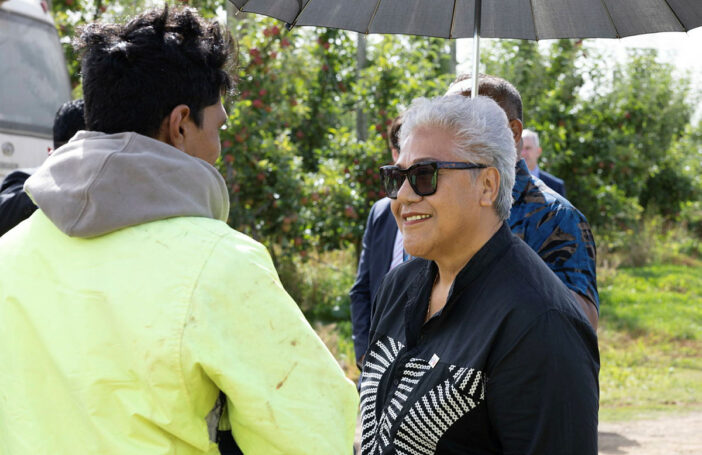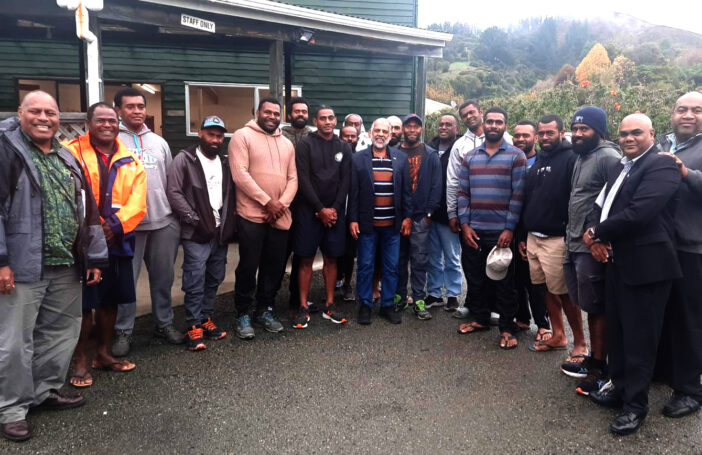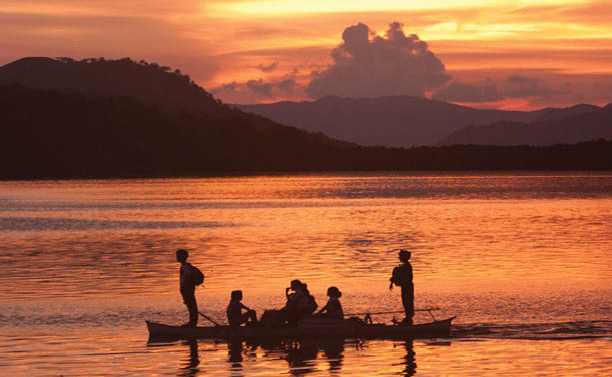This three-part blog is an edited version of the keynote address given by Professor Meleisea at the 2023 Pacific Update, on 15 June.
The Samoan government, which put an abrupt temporary stop to the labour mobility schemes earlier this year, is considering a draft policy paper that draws attention to key concerns about the impacts of labour mobility programs on Samoa.
The first of these policy considerations is in response to representations to government by private sector employers about losing workers, in particular losing technicians and service workers who they had trained on the job. The government is also concerned about the loss of junior skilled and educated government workers, including police, nurses, teachers and clerical staff, to seasonal work.
Michael Yemoh’s 2022 survey of 30 small businesses chosen at random from members of the Samoa Chamber of Commerce, found that all of them reported loss of middle and lower level employees that they had trained, and that many of the workers they lost were skilled technicians. Evidently their former employees were prepared to live in restricted conditions far from home doing mostly heavy unskilled work because the pay, even after hefty deductions, was far more than they could earn in Samoa.
It is often said that seasonal workers will return with better skills to contribute to Samoa. At a conference on labour mobility in Samoa in November 2022, speaker after speaker insisted that there was no “brain drain” but only “brain gain”. But as one young seasonal worker returning from Australia told us jokingly “… if we ever get a blueberry industry in Samoa, I will be able to train all the pickers”.
In effect, private businesses in Australia and New Zealand are being backed by their government to source labour from overseas to overcome their labour shortages at the expense of Samoa’s private sector, which was clearly not intended when these schemes began. Except for the businesses selling cars, home appliances and building materials, the private sector has been hit hard, losing their investment in training workers and facing similar labour shortages to employers in rural New Zealand and Australia, in circumstances where they can’t compete on wages.
Most of the industries in which Samoan seasonal workers are employed overseas are unlikely to ever be established in Samoa. Local wages will not attract Samoans to return to local employment unless they have no other choice. Most of them hope to do seasonal work again, year after year. This narrows new opportunities when the same workers are recruited recurrently.
In most cases, overseas recruiters not only offer better pay than jobs in Samoa, but a chance to save money. The Samoa Ministry of Commerce and Industry annual report for 2020 estimated that in six months, in the 2017-18 season, an RSE worker in New Zealand earned between SAT14,601 and SAT18,723 after tax and deductions. The corresponding earnings for six months under the SWP in Australia were between SAT13,374 and SAT16,897. Seasonal work can impose employment circumstances that facilitate saving money. Some have compared these circumstances to being sent to boot camp. With contractual requirements to occupy employer-provided living quarters, required saving arrangements in bank accounts, and restrictions on drinking alcohol, saving is made easy.
The government is well aware that there have been some abuses of Samoan and other Pacific Island workers by overseas employers and local contractors, despite the general satisfaction of returning workers with their experiences. There are also social costs of family separation and breakdown, the loss of skilled and reliable workers in the public and private sectors, and the uneven access to seasonal work, where many of those who most need the opportunity are rejected by the government agency and by local labour recruiters.
After stakeholder consultation, the Government of Samoa is considering setting a cap by which 12,000 currently unemployed workers will be mobilised annually, 6,000 each for New Zealand and Australia. The draft policy proposes to strengthen the capacity of the Labour Employment Export Programmes Division of the Ministry of Labour and Industry for mobilising and reintegration of workers.
The government is also considering opening a dialogue with Australia and New Zealand towards measures that will improve and enhance the protection and security of workers while they are working in their countries. It wants these countries to address well-documented issues such as unfair deductions from their wages, substandard accommodation, and workers being laid off unpaid for periods when they had to cover their own living expenses because the labour hire firms had not found work for them.
To achieve these improvements, the Government of Samoa is considering imposing an accreditation procedure and costs on Australia and New Zealand employers who wish to recruit from Samoa, so that Samoa can afford to address the issues currently undermining the schemes.
Samoa is considering cost-recovery measures for the facilitating of the labour mobility schemes in-country by a facilitation fee. This would include requirements for employers to disclose information on wages and taxes, a refund entitlement before contracts are signed, prohibiting the imposition of additional charges when workers arrive in Australia or New Zealand, and improving entitlements of workers for leave, working conditions, fair pay, medical and insurance coverage, housing and pastoral care. The Government of Samoa is considering requiring liaison officers to be placed near working sites in Australia and New Zealand, and more transparent information-sharing mechanisms between the three governments.
The draft policy also proposes to end mobilisation of workers under the PLS scheme, which offers visas for contracts of three years or more in rural and regional Australia with pathways for emigration.
The government proposal for improvement is also directed to increasing equity, and preventing the best qualified workers from being siphoned away from Samoa. This would include tightening of selection processes to ensure that only those genuinely unemployed are mobilised. People would only be eligible if they have been unemployed for a significant period of time, for example more than six months.
To achieve this, it is proposed that all labour mobility operations be consolidated and centralised through the Government of Samoa. Ensuring registration and oversight of all private recruiters and overseas employer companies and contractors would form part of this initiative.
In order to allow more Samoans to benefit from seasonal work, the draft policy proposes to disallow workers from taking sequential contracts, and require that returning workers spend at least a year back in Samoa before reapplying for a contract. This would mean increased opportunities for those wanting to work who have not previously been mobilised. Employers in Australia and New Zealand clearly prefer to hire workers who they have already trained in a previous season, but they would be required to take account of Samoa’s equity requirements. The policy also proposes to set a limit on the number of times a single worker is mobilised under the schemes.
This is the second blog in a three-part series.
Professor Meleisea’s keynote address was based on a chapter by Malama Meleisea, Masami Tsujita and Michael Yemoh in a forthcoming book edited by Penelope Schoeffel, Malama Meleisea and Kalissa Alexeyeff, provisionally titled Labour mobility impacts on Samoa, past and present.





